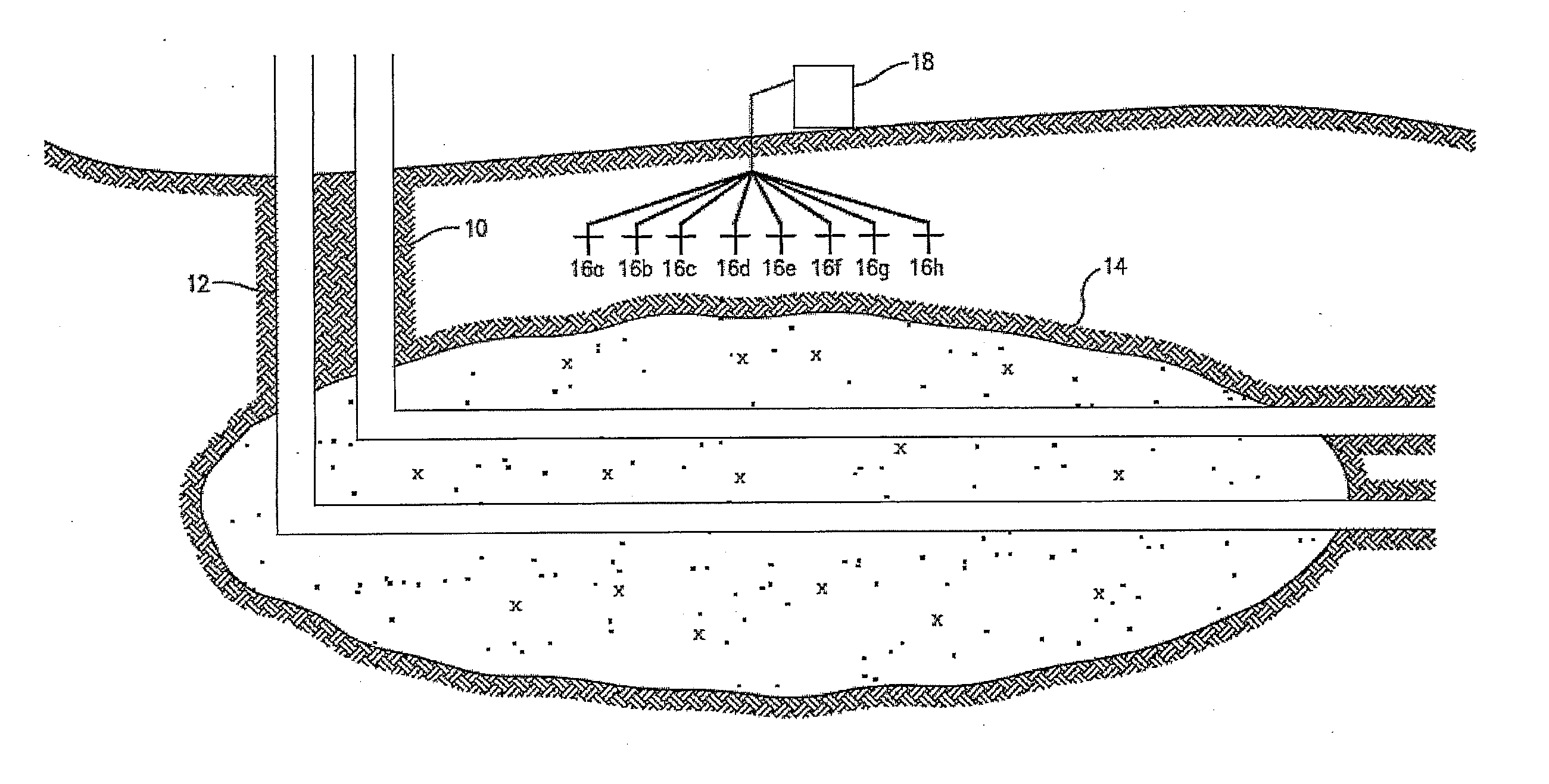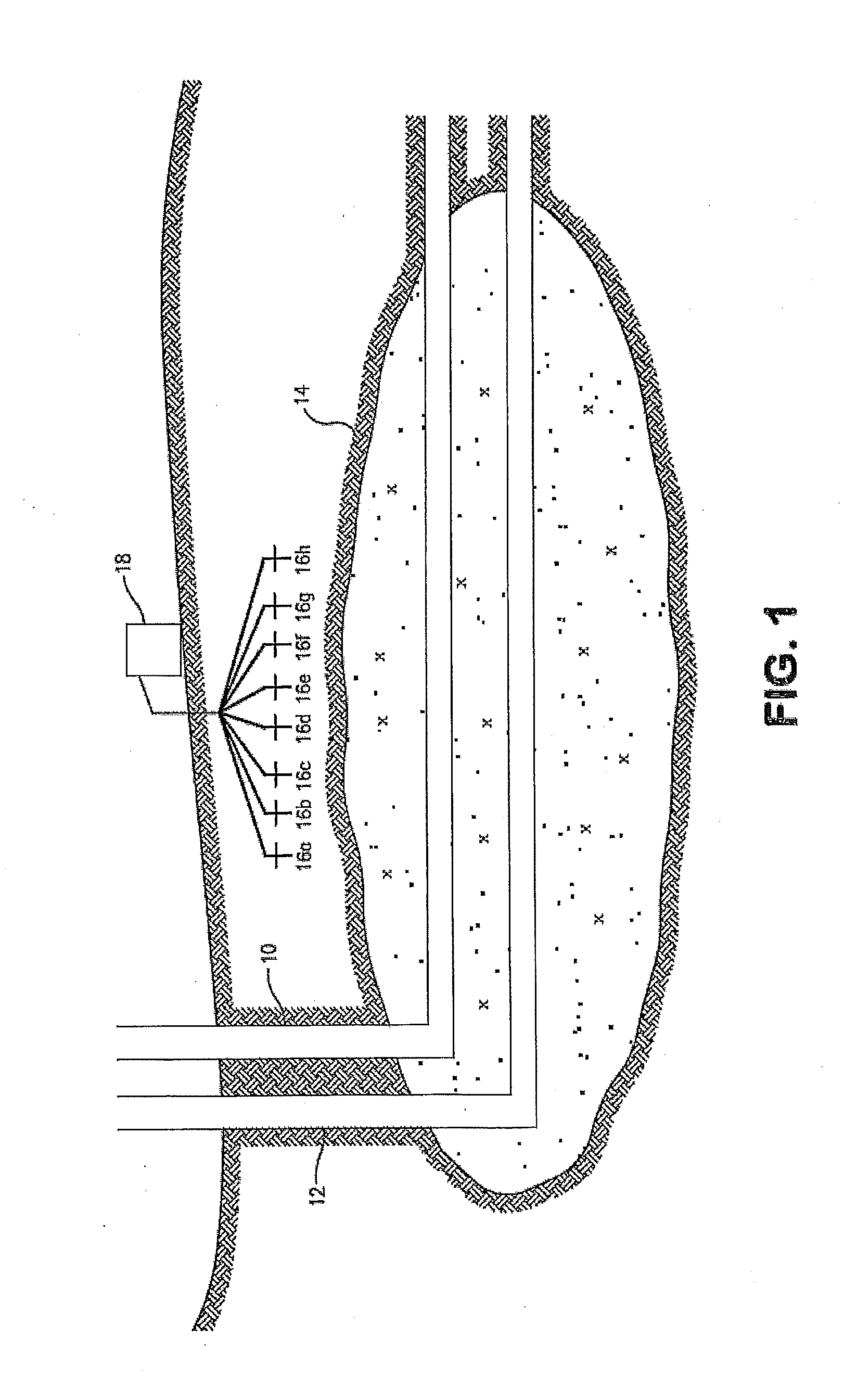Accelerating the start-up phase for a steam assisted gravity drainage operation using radio frequency or microwave radiation
a technology of radio frequency or microwave radiation and gravity drainage, which is applied in the direction of fluid removal, borehole/well accessories, insulation, etc., can solve the problems of injected steam condense before reaching the end of the well, hydrocarbons are too viscous to flow, and excessive heat loss from the annulus
- Summary
- Abstract
- Description
- Claims
- Application Information
AI Technical Summary
Problems solved by technology
Method used
Image
Examples
Embodiment Construction
[0023]The current method teaches the ability to heat a formation. The method begins by forming a steam assisted gravity drainage production well pair within a formation. This is followed by beginning a preheating stage by injecting an activator into the formation. The preheating stage is accomplished by exciting the activator with radio frequencies. This preheating stage is then followed by a steam assisted gravity drainage operation.
[0024]By choosing specific activators to inject into the formation, one skilled in the art would have the requisite knowledge to select the exact radio frequency required to achieve maximum heating of the activator. Therefore the current method eliminates the need to arbitrarily generate variable microwave frequency which may or may not be able to efficiently absorb the microwave radiation. The activator ionic liquids chosen would have specific properties such as containing positively or negatively charged ions in a fused salt that absorbs MW / RF radiati...
PUM
 Login to View More
Login to View More Abstract
Description
Claims
Application Information
 Login to View More
Login to View More - R&D
- Intellectual Property
- Life Sciences
- Materials
- Tech Scout
- Unparalleled Data Quality
- Higher Quality Content
- 60% Fewer Hallucinations
Browse by: Latest US Patents, China's latest patents, Technical Efficacy Thesaurus, Application Domain, Technology Topic, Popular Technical Reports.
© 2025 PatSnap. All rights reserved.Legal|Privacy policy|Modern Slavery Act Transparency Statement|Sitemap|About US| Contact US: help@patsnap.com


